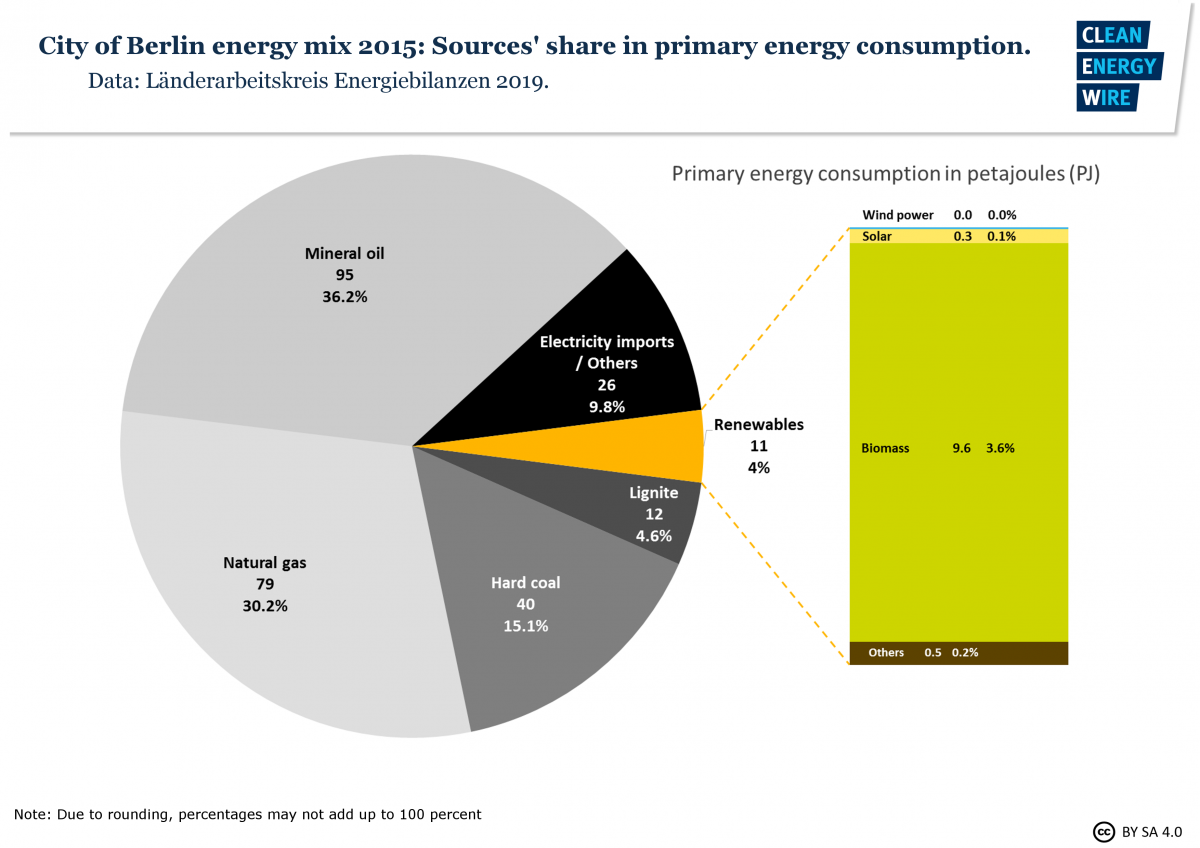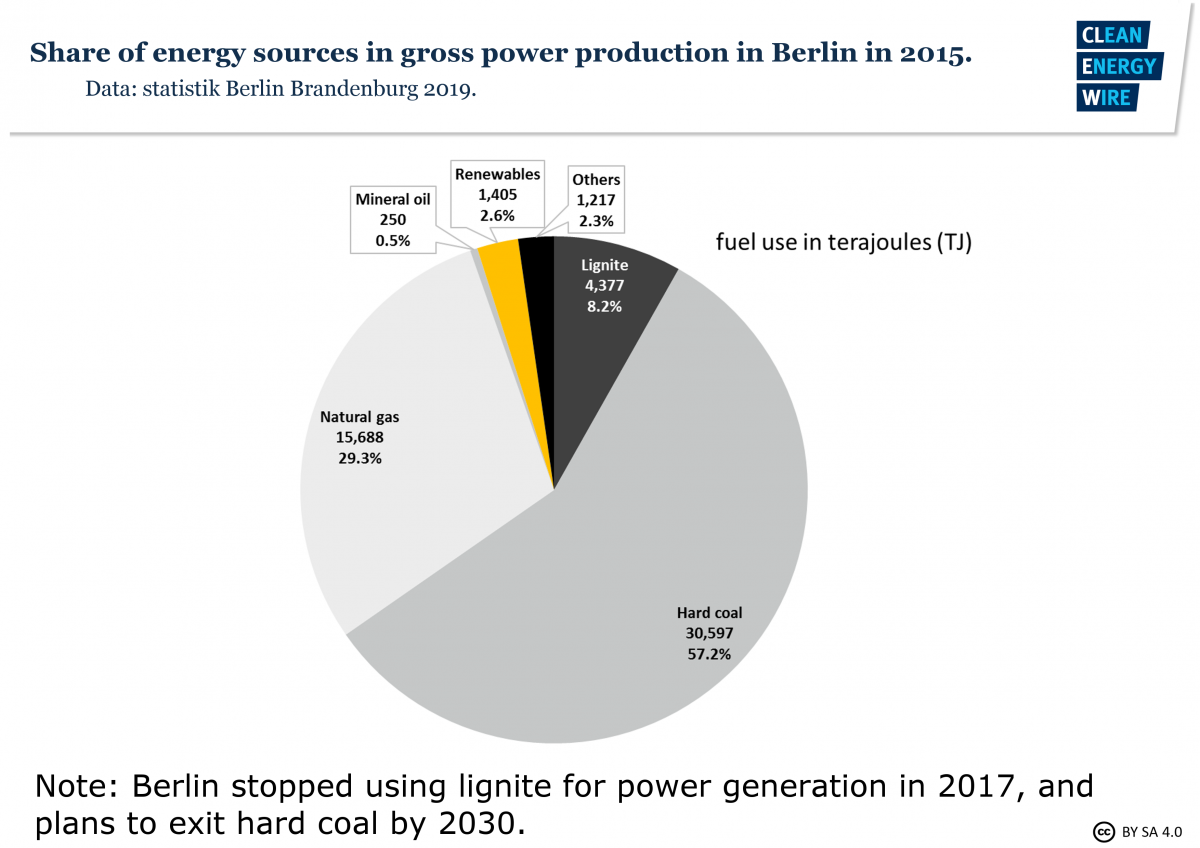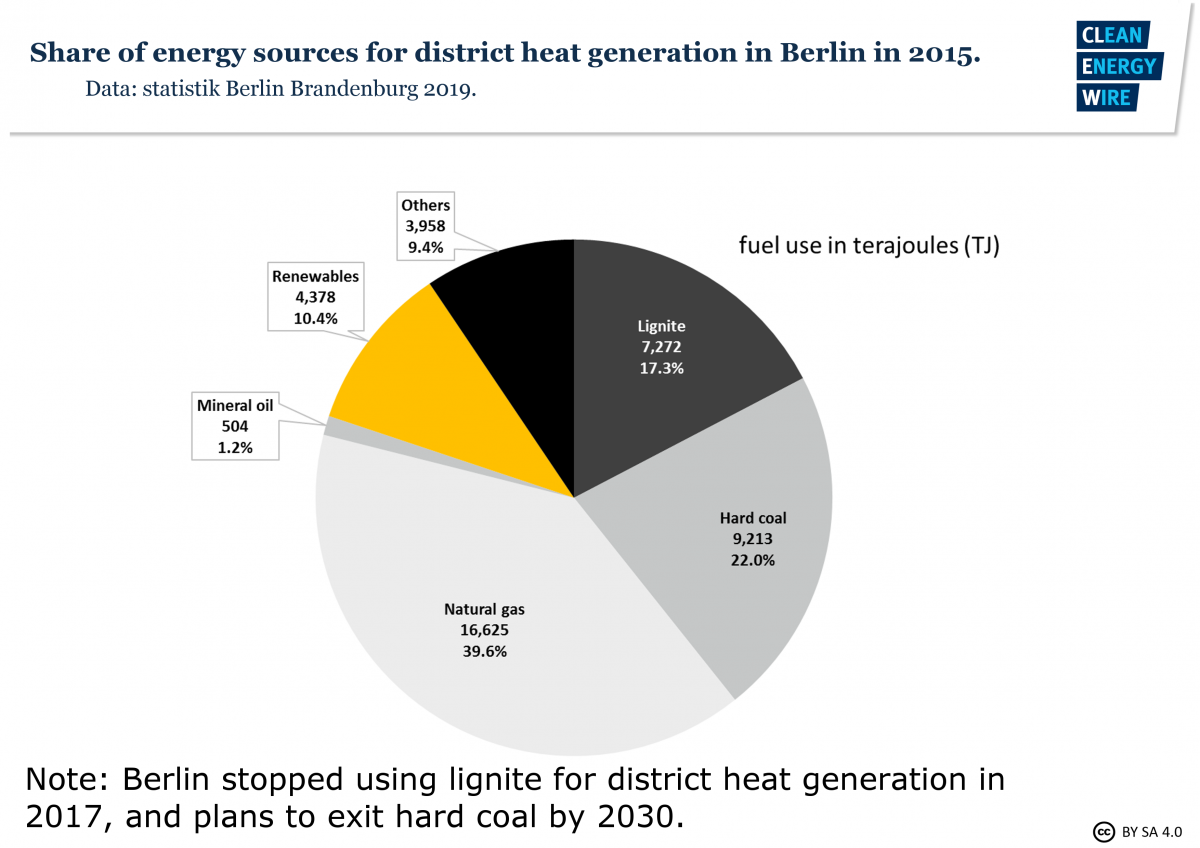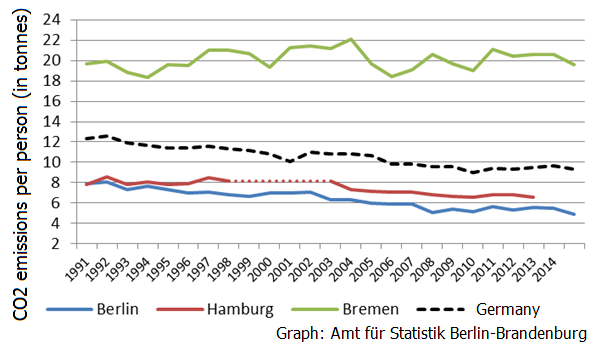Energy use in the city of Berlin
General
Total population: 3,723,914 (June 2018)
Predicted growth: 181,000 people expected to move to the city by 2030. From 2011 to 2016 some 50,000 people moved to the city every year. In 2017, this was down to about 40,000.
Households: 2 million
Surface area: 891.7 km2
Disposable income: According to the latest statistics from the Office of Statistics Berlin-Brandenburg, the average Berlin disposable income per person stood at 19,719 euros in 2016, around 10 percent below the national average.
Energy mix
1. Primary energy use by energy source in 2015:
Berlin consumed 263.2 petajoules (PJ) in 2015, which made up two percent of Germany’s total primary energy consumption.
2. Fuel use for electricity generation in 2015:
Berlin consumed about 14 terawatt hours of electricity in 2015, about half of which was produced in the city. Berlin mostly uses hard coal and gas to generate its electricity, but phased out the use of lignite in 2017.
3. Fuel use for district heat generation in 2015:
Berlin's district heating network is the third largest in Europe, after Moscow and Warsaw.
Emissions
Coal (lignite and hard coal) accounts for 30.5 percent of total CO₂ emissions from primary energy consumption, with mineral oil making up 41.5 percent and gas another 26.9 percent.
With 4.7 tonnes of C02 emissions per person in 2015, Berlin’s per capita emissions are around half the level of Germany as a whole (9.1 tonnes per capita).
Transport
Berlin’s transportmakes up around a third of the capital’s CO₂ emissions.
Car ownership: With 342 cars per 1,000 inhabitants, Berlin has a far lower rate than Germany’s other large cities.
Number of electric cars: 3,037 (source: Zulassungsbehörde Berlin, 10.2018)
Number of electric buses: 5, plus 30 more have been ordered for spring 2019, according to public transport operator BVG
Political goals
Berlin aims to be climate neutral by 2050. It defines climate-neutral as limiting total urban carbon dioxide emissions to 4.4 million tonnes per year – a reduction of about 85 percent compared to 1990 levels.
How does Berlin define climate neutrality?
“A city can be regarded as ‘climate-neutral’ if its greenhouse gas emissions can keep global warming below the dangerous threshold of 2°C – assuming a world population of 9 billion people by 2050, each endowed with the same per-capita emission rights of 2 metric tonnes of CO₂ equivalents (life-cycle based). Berlin’s greenhouse gas emissions consist mainly of CO₂ (98 %). Given these conditions, Berlin could become climate-neutral if total urban carbon dioxide emissions can be limited to 4.4 million tonnes by 2050 – a reduction of about 85 % compared to 1990 levels. However, absorption capacities of greenhouse gases by the bio-sphere (‘sinks’), as well as emissions embodied in products and infrastructure should also be considered. While current CO₂ statistics often ignore these, the target value of 4.4 million t CO₂ accounts for them.” (link to source)
En route to this target it has set the milestones of a 40 percent CO2 reduction by 2020 and a 60 percent CO2 reduction by 2030.





